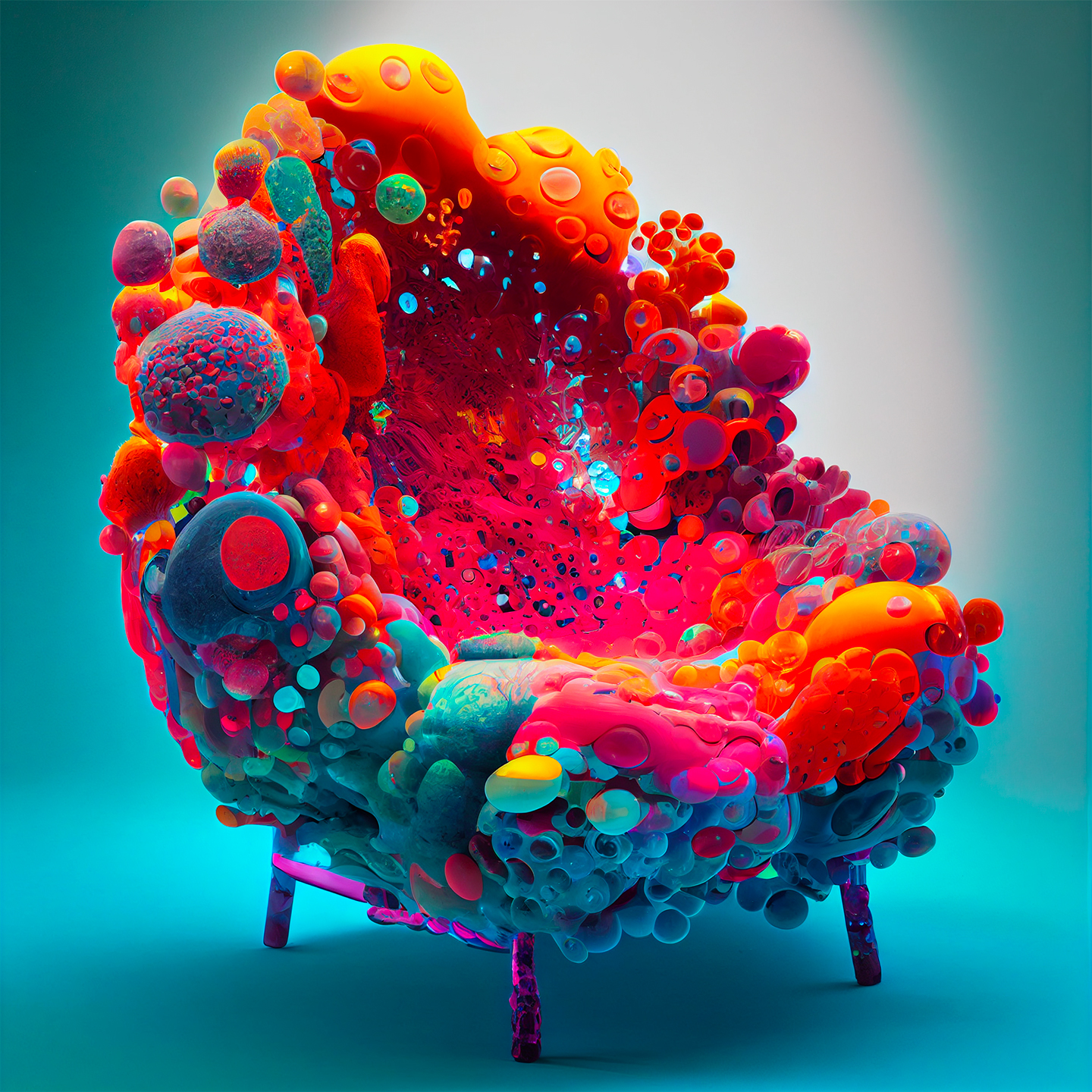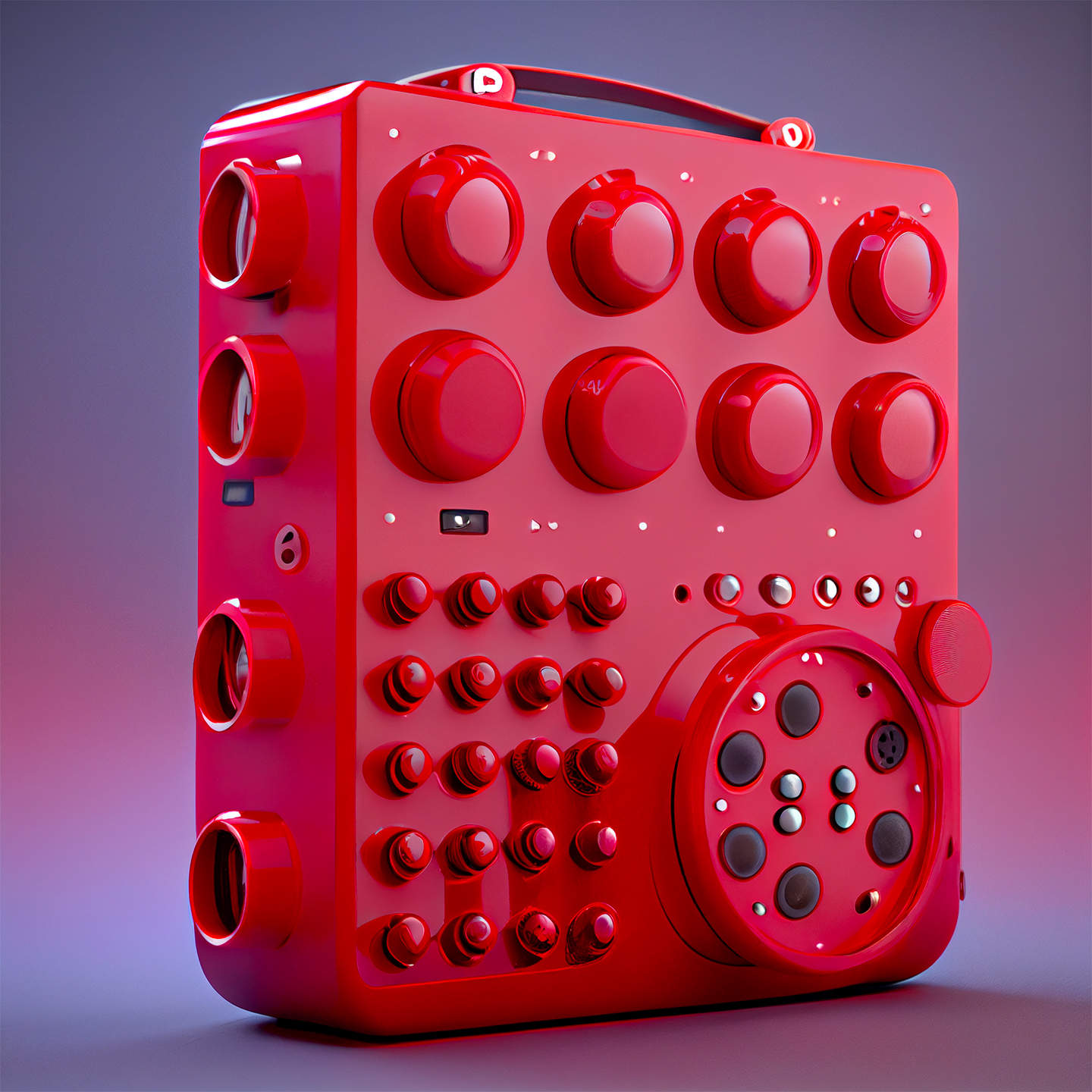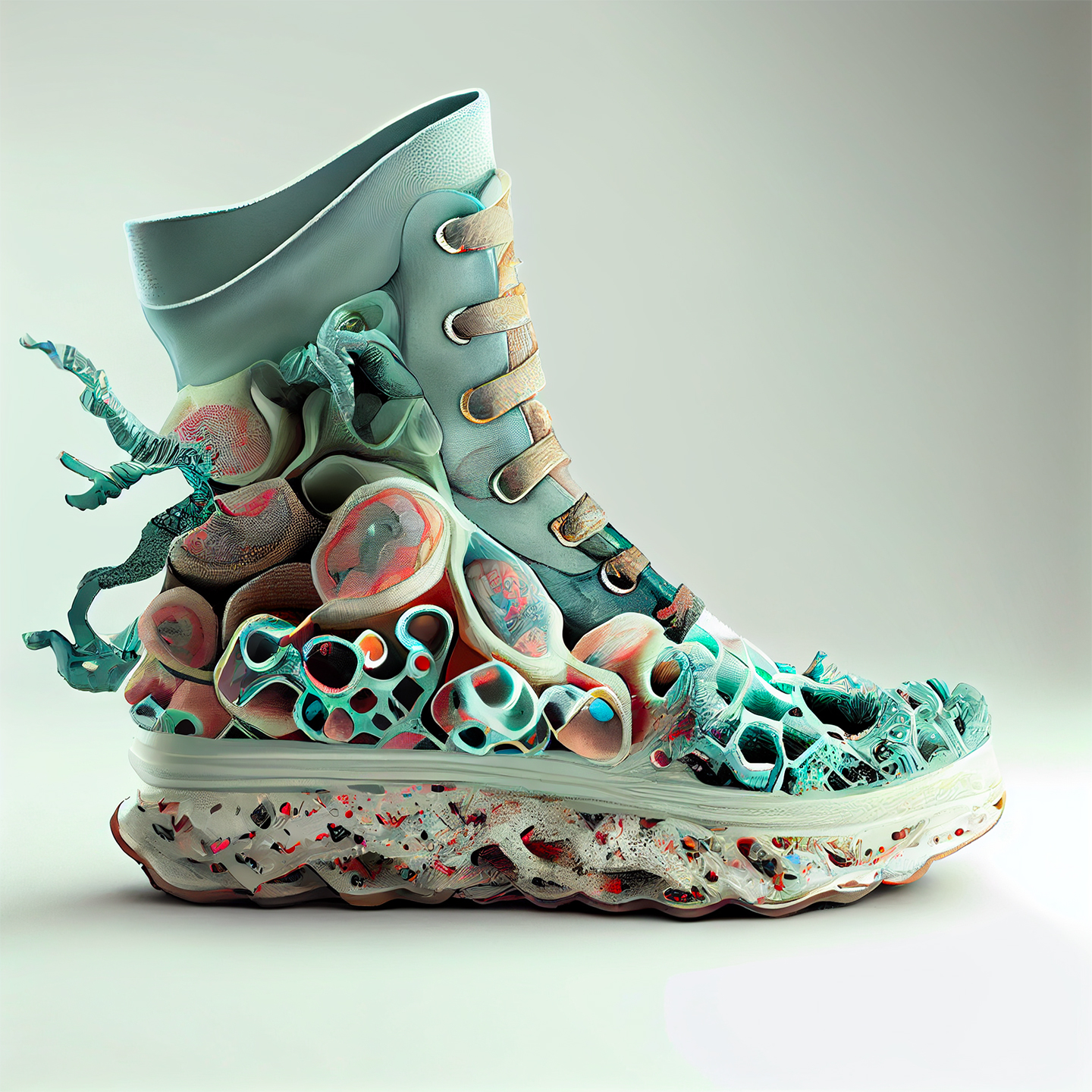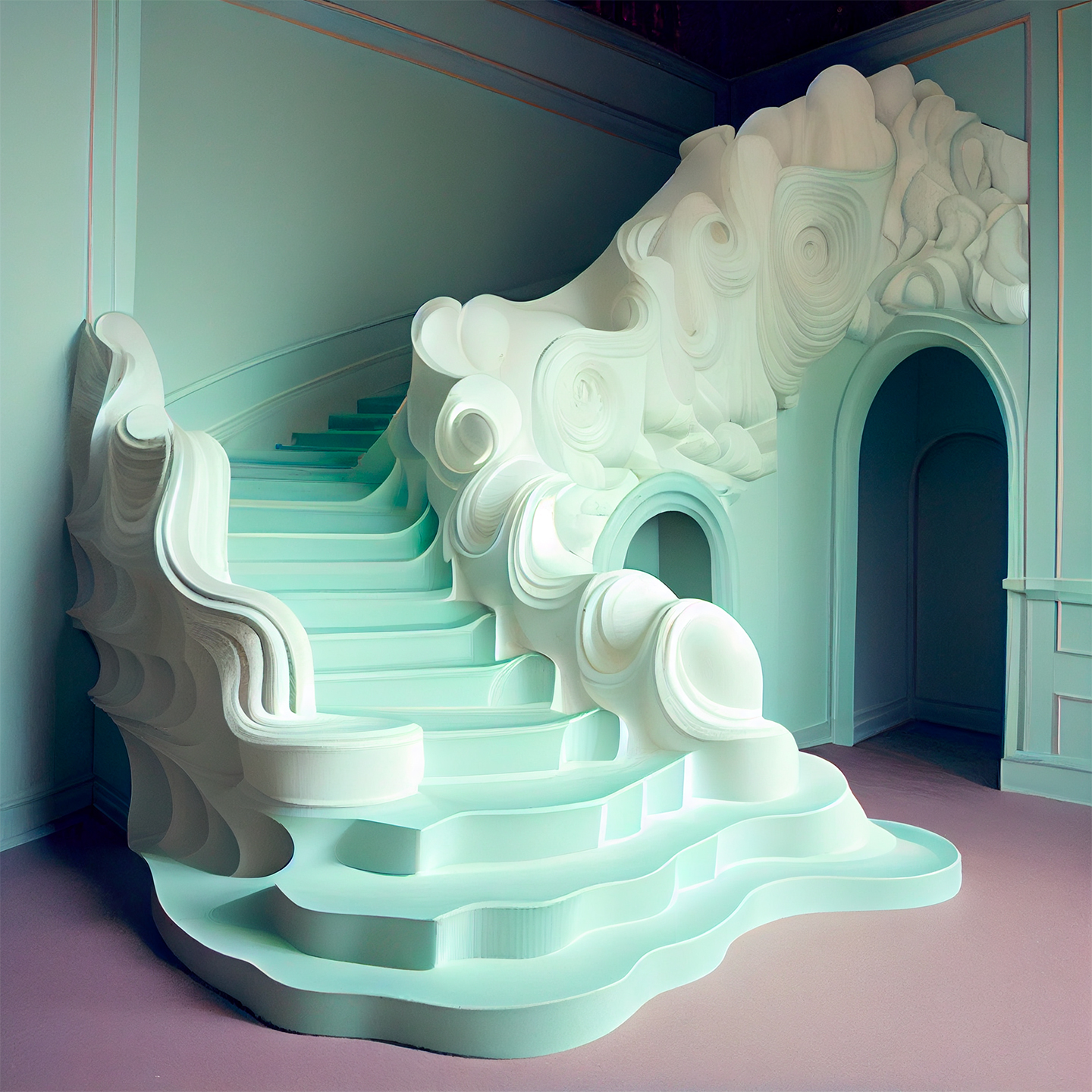
When I talk about images and reality, I always mention the evergreen René Magritte, who used his painting “La trahison des images” (also known as o “Ceci n’est pas une pipe”) to remind us that a painting of a pipe is not a smoking pipe but a graphic representation of one.
This means that any images of real or imagined objects are just that – an image. To construct and create any of this, we need to rely on traditional design knowledge and skills.
The rise of AI-based tools for image generation has made many designers feel uneasy, as images that previously required high skills, extensive training and a long time to create can now be generated quickly and easily.

A chair made of colourful bubble structures with a study on corals, created by Istituto Marangoni Milano Design Professor Lorenzo Bustillos, also known as Lorbus, using artificial intelligence tools © Courtesy of the author
The flip side is that research and image curation of a project can now be speeded up and improved by using this highly motivated assistant with endless creativity.
Visualizza questo post su Instagram
I compare it to the advent of photography, when more than one painter felt threatened, but it ultimately made them extend their use of painting as a means of communication where feelings, performance, and concept became more important, ushering in the era of impressionism, abstraction and pop art among others.

Electronic device in super glossy red plastic designed by Lorenzo Bustillos with AI © Courtesy of the author
In my experience with AI, I find that the most intriguing part of the results is the serendipity, the unknown, the unexpected outcomes that can inspire new design ideas and lead to creative breakthroughs.
Visualizza questo post su Instagram
In my prompts, I leave space for ambiguity. I usually keep them short so the AI has different ways of interpreting what I want, giving me more creative outputs to explore. Being concise allows the AI to be unrestrained and leads to exciting new images.
Visualizza questo post su Instagram
I’ve noticed that when I provide too much detail, the results are less appealing. A prompt that is too long makes the algorithm do too many things at the same time, generating images that might be confusing or too complex.

Shoe design for mould and spore sneakers, imagined by Lorenzo Bustillos using artificial intelligence © Courtesy of the author
When working with Midjourney, the most popular AI image generator at the moment, I start by asking for an object, a place or a graphic I need. The medium or how it will be represented will tell the AI what the result should look like. Will it be a rendered image? A drawing? A photograph taken with a specific camera?
Next, I consider the environment, mood and colours. Is it a dark setting, a photo studio or an abandoned factory overtaken by vegetation?
Visualizza questo post su Instagram
AI is like having a design colleague with a vivid imagination, but it can be challenging and unpredictable when you try to direct the outcome. If you want to create AI images, it’s important to take control of the algorithm and guide it towards the desired result.
Visualizza questo post su Instagram
By creating numerous images, the designer becomes a curator, a critic who selects and merges differing attributes that are beneficial to the project at hand. You can then launch new generations of the images you consider successful and cross-breed them to create new generations.

A staircase made of foam, created by Lorenzo Bustillos with AI © Courtesy of the author
Blending two or more images can lead to really unexpected results; it becomes an exercise in surrealism to generate pictures that combine opposing worlds, like a cotton candy wash bag or a rug inspired by ocean waves.
Visualizza questo post su Instagram
The best way to get a grasp of the possibilities is to try them out, experimenting with things that are well-known to us. Work with everyday objects and mix them with known inspiration. Using a well-established designer or artist will give you a grasp of the choices and how they manifest graphically while still maintaining a sense of reality.
Visualizza questo post su Instagram
You can then venture into testing the intangible, like love, darkness or hunger, to generate indescribable images. After all, this new technology is very approachable and easy to use and creating compelling images is now possible for everyone, even those of us with no image or drawing skills.
Lorenzo Bustillos
Multi-disciplinary designer, artist and professor at the School of Design, Milan

